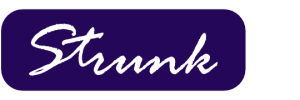Banks Can Increase Customer Satisfaction & Fee Income at the Same Time
Strunk’s Secure checking strategy has been around since 2011 and it will enhance customer loyalty while increasing fee income at the same time. Notably, the banking industry has lost nearly $20B in service charge income over the past 15 years and it has affected banks across the country regardless of size. Free Checking was offered by most every bank between 1990 and 2020 but now fewer banks give anything away for free.
Secure checking is easy to implement and it provides financial and lifestyle benefits to consumer accounts for a small monthly fee. Many times a bank’s customers are paying for these services elsewhere for substantially more than what the bank can offer them for. Consumers are willing to pay for value. Secure checking offers tremendous value.
Recently, banks have received a reprieve from the overzealous industry watchdogs but our industry is changing and consumer habits are changing. Tele-health services, roadside assistance, cell phone protection, Identity theft protection, and access to credit bureau and credit scores are examples of services a bank can provide at a fraction of the cost a consumer would pay individually.
Over 1,200 banks offer the Secure checking account to their offerings while maintaining free checking. You can expect income to go up by at least $50 per checking account per year. The program is easy to implement and easy to manage.
Contact Strunk at 800-728-3116 or email at info@strunkaccess.com to learn more about fee income programs offered by Strunk.


